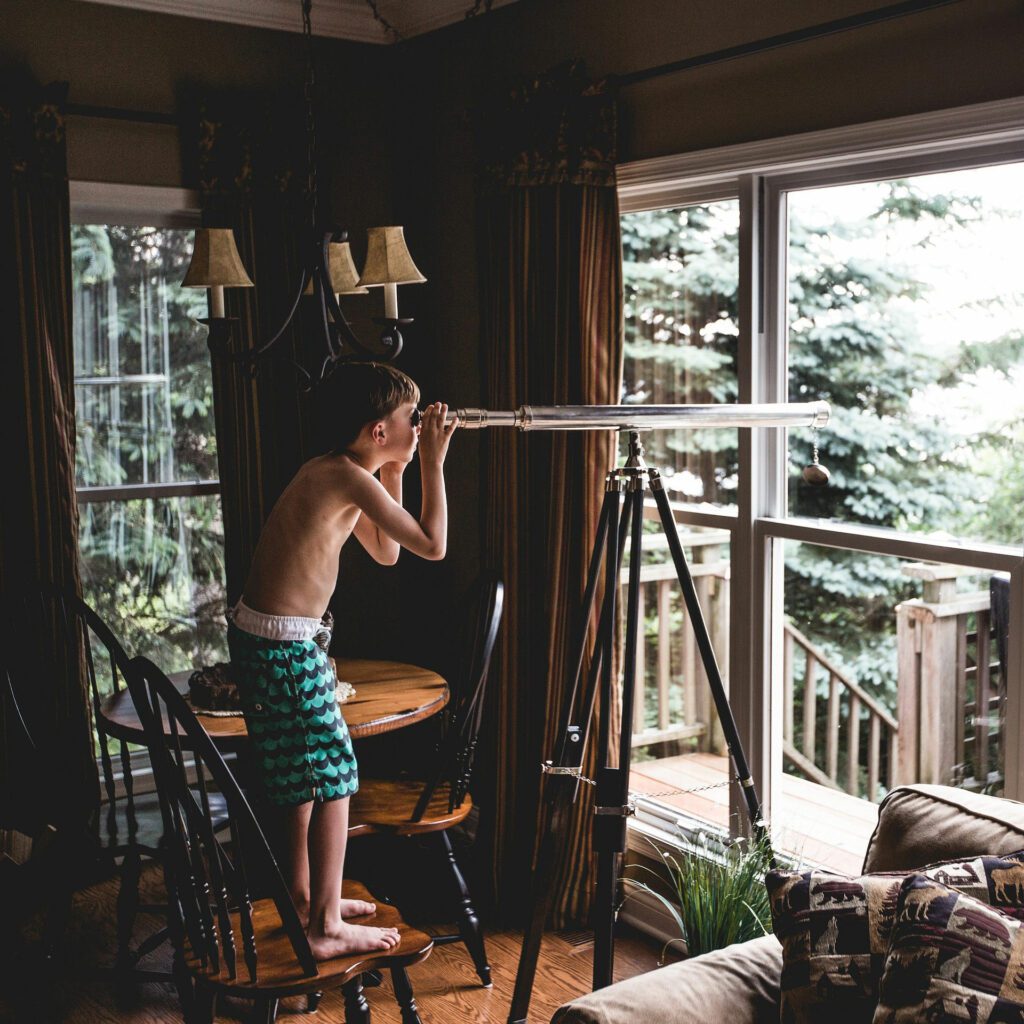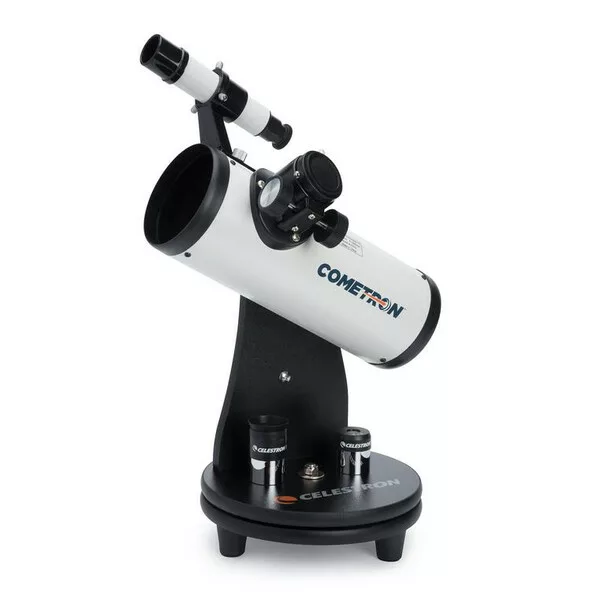Telescope for Children

Astronomy importance
Astronomy is an exciting and fascinating field of science that explores the mysteries of the universe. It captures the imagination of children and adults alike, and has the potential to inspire a lifelong interest in science. Learning about the vastness of the universe, the beauty of the stars and galaxies, and the mysteries of black holes and dark matter can ignite a sense of curiosity and wonder in children.
Critical thinking
It encourages them to ask questions, think critically, and explore the unknown. This sense of curiosity can inspire children to pursue further study in science, technology, engineering, and mathematics (STEM) fields. They are in high demand in today’s economy. It can also help them develop critical thinking skills. They learn to analyze data and make observations about the natural world. This can be particularly beneficial for children who struggle with traditional academic subjects. As it provides an alternative way to engage with scientific concepts.
Implications for our planet and our environment
Astronomy is not just about studying the stars and planets. It also has important implications for our planet and our environment. Studying astronomy can help children develop an appreciation for the fragility of our planet. And the importance of protecting our environment. It can also inspire them to learn more about space exploration and the potential for humans to live on other planets. This can lead to a greater awareness of the global challenges we face and the importance of taking action to address them.
Astronomy is also a subject that encompasses many different fields of study, including history, art, and literature. Learning about the history of astronomy, the cultural significance of the stars, and the artistic representations of space can help children develop a broader understanding of the world and their place in it. It can also promote interdisciplinary learning, as children make connections between different subjects and explore the ways in which they are interconnected.
By exposing children to the wonders of the universe, we can help them develop a lifelong love of learning. And a passion for science that can benefit them throughout their lives. However, with so many different brands and models of commercial telescopes on the market, it can be difficult to know which one is best for children. In this article, we will explore some of the best brands and models of commercial telescopes for children.
Different types of telescopes suitable for children
| Telescope Type | Features | Suitable Age Group | Benefits | Considerations |
|---|---|---|---|---|
| Refractor | Easy to handle and maintain, durable. | 5-8 years | Ideal for beginners, clear images. | Limited aperture size, can be expensive. |
| Reflector | Larger aperture, better for deep sky viewing. | 9-12 years | Greater detail in viewing, usually more affordable. | Requires more maintenance, alignment. |
| Compound | Compact and portable, versatile. | 13+ years | Good for both celestial and terrestrial viewing. | Higher price range, can be complex for very young children. |
| Tabletop Dobsonian | Simple design, easy to use. | All ages | Very user-friendly, good for shared family viewing. | Limited in portability and power. |
| Digital Telescope | Integrates with smartphones or tablets. | 10+ years | Modern and engaging for tech-savvy kids. | Depends on external devices, less traditional experience. |

What to Consider When Selecting a Telescope for Children:
Aperture
The aperture of a telescope refers to the size of the lens or mirror that collects light. A larger aperture will provide a brighter image and allow you to see more details. But it can also be more expensive and heavier. For children, it is best to start with a smaller aperture of around 4-6 inches, as this will be easier to handle and still provide plenty of light-gathering power.
Magnification
Magnification is an important consideration when selecting a telescope for children. It determines how much the image will be enlarged. It is important to remember that a higher magnification does not always mean a better image. The quality of the image can be degraded by atmospheric turbulence and other factors. For children, it is best to start with a low magnification of around 20-30x. Then gradually increase it as they become more comfortable using the telescope.
Mount
The mount of a telescope determines how easy it is to use and how stable the image will be. It is best to start with a simple alt-azimuth mount. This is easy to use and provides a stable image. As they become more experienced, they can move on to more advanced mounts, such as equatorial mounts, which allow for more precise tracking of objects in the sky.
Eyepiece
The eyepiece is an important component of a telescope. It determines the magnification and field of view of the image. For children, it is best to start with a low-power eyepiece, such as a 25mm or 30mm. This will provide a wide field of view and make it easier to find objects in the sky.
Best Brands and Models of Commercial Telescopes for Children:
Orion StarBlast 4.5
The Orion StarBlast 4.5 is a great option for children. It is lightweight, easy to use, and provides a bright image. With a 4.5-inch aperture and a simple alt-azimuth mount, this telescope is perfect for beginners, and the included eyepieces allow for a range of magnifications.
Meade NG-70
The Meade NG-70 is another great option for children, with a 70mm aperture and a compact design that is easy to handle. The included altitude-azimuth mount is simple to use and provides a stable image, and the eyepieces allow for a range of magnifications.
Celestron FirstScope 76
Please note: Some of the links in this article are affiliate links. This means that, at no additional cost to you, we may earn a commission if you click through and make a purchase. Our content is always created with the aim of providing valuable information and honest reviews. The inclusion of affiliate links helps us to maintain this site and continue delivering high-quality content to our readers. We appreciate your support!
The Celestron FirstScope 76 is a compact and affordable option for children, with a 76mm aperture and a simple alt-azimuth mount. The included eyepieces provide a range of magnifications, and the compact design makes it easy to transport and store.
Sky-Watcher Heritage 76
The Sky-Watcher Heritage 76 is a great option for children who are interested in exploring the night sky, with a 76mm aperture and a simple alt-azimuth mount. The included eyepieces allow for a range of magnifications, and the compact design makes it easy to handle and transport. The telescope also features a red dot finder, which makes it easier for children to locate objects in the sky.
Gskyer Telescope 80mm
Please note: Some of the links in this article are affiliate links. This means that, at no additional cost to you, we may earn a commission if you click through and make a purchase. Our content is always created with the aim of providing valuable information and honest reviews. The inclusion of affiliate links helps us to maintain this site and continue delivering high-quality content to our readers. We appreciate your support!
The Gskyer Telescope 80mm is a compact and lightweight option for children, with a 80mm aperture and a simple alt-azimuth mount. The telescope includes two eyepieces, allowing for a range of magnifications, and the red dot finder makes it easier to locate objects in the sky. The compact design makes it easy to transport and store, making it a great option for children who are interested in taking their telescope with them on the go.
Zhumell Tachyon 25
The Zhumell Tachyon 25 is a great option for children who are just starting out with astronomy, with a 25mm aperture and a simple alt-azimuth mount. The telescope is easy to use and provides a stable image, and the included eyepieces allow for a range of magnifications. The compact design makes it easy to handle and transport, making it a great option for children who are interested in taking their telescope with them on the go.
Commercial telescopes for children can provide a wonderful opportunity for them to explore the universe and learn about the stars. With so many different brands and models on the market, it is important to consider factors such as aperture, magnification, mount, and eyepiece when selecting a telescope for children. Some of the best brands and models of commercial telescopes for children include the Orion StarBlast 4.5, Meade NG-70, Celestron FirstScope 76, Sky-Watcher Heritage 76, Gskyer Telescope 80mm, and Zhumell Tachyon 25. With a wide range of options available, there is sure to be a telescope that is perfect for your child’s interests and abilities.
Conclusion
Choosing the right telescope for a child is a balance between the child’s age, interest level, and the telescope’s functionality. It’s important to select a telescope that is age-appropriate, easy to use, and within a reasonable budget. Whether it’s for casual stargazing or a budding interest in astronomy, the right telescope can spark a lifelong interest in the wonders of the universe, making it a valuable and educational tool for children.
FAQ Section for “Telescope for Children”
What’s a Good Age to Start Using a Telescope?
Children as young as 4 years old can begin using simple telescopes, with supervision.
Are Refractor Telescopes Good for Young Children?
Yes, refractor telescopes are durable and easy to use, making them ideal for young children.
What Should I Consider When Buying a Telescope for a Child?
Consider the child’s age, interest level, and the telescope’s ease of use, maintenance, and portability.
Do Children’s Telescopes Offer Good Quality Images?
Many children’s telescopes provide decent quality images, suitable for sparking interest in astronomy.
Can Telescopes Be Educational for Children?
Absolutely, telescopes can be a great educational tool, fostering curiosity and learning about space and science


